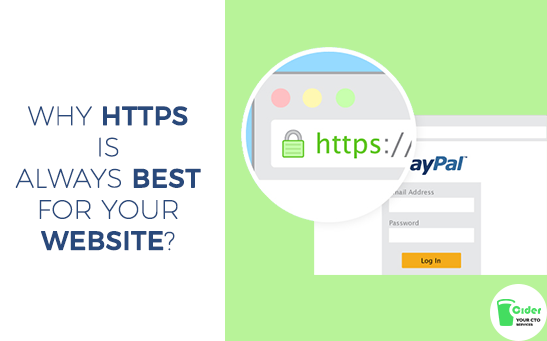Data driven marketing certainly isn’t a new concept, but modern-day data science provides businesses with a whole new way of levering data points to optimize sales and business outcomes. Taking things to the next level, Salesforce is now integrated with the Google Cloud — thanks to Google’s Analytics 360. This innovative new method of data collection and analytics is far more intelligent than even the most experienced marketing executives could produce — or imagine.
BRIDGING THE GAP BETWEEN ONLINE AND OFFLINE CUSTOMER INTERACTIONS
Identifying trends at every level of the customer journey is key to optimizing retention, repeat sales, and new conversions. Even with the advanced analytics present within Salesforce and Google Analytics, there was still a missing link in the data — how to measure and analyze a customer’s online and offline behaviors in one integrated system. Analytics 360 does just that. It integrates all the offline data and lead interactions recorded in Salesforce with all the data found in Google Analytics creating a powerful new method of measuring insights.
HOW TO LEVERAGE THIS NEW DATA SCIENCE
The new data points allow business owners and marketing teams to create custom reports to identify trends they did not yet know exist. For example, at what step in the offline sales pipeline does a client pop online to learn more about your products or services? If you can pinpoint when this occurs, you can create supportive cross-channel marketing — maybe even a Google ad. This science can also be used for every area of digital marketing and content optimization. It will help you to create demographics within your demographics, and hyper-target them accordingly — in both your online and offline campaigns. These trends can also be leveraged to improve your current product offering or create new products.
A NEW AND IMPROVED SALES PIPELINE
The first month or so after integrating your Salesforce with Analytics 360, you may find that you need to revise your current marketing funnels, or create additional marketing funnels. The more data driven customer journey strategies you create, the more you personalize the journey. While marketing and sales goals are the primary objective, when utilized properly you can increase consumer engagement and satisfaction. In addition, this will help to brand your business in the light you want each demographic to relate to. Currently our team is experimenting with the opportunities this integration brings to marketing world, but results are already impressive. Reach out to us to get a FREE quote!
AUTOMATE MORE OF YOUR MARKETING
The goal of any sales pipeline is to identify trends that increase the odds of creating a conversion. With this integration, you can take your marketing automation to a new level. Learning at what point a lead begins to lean more toward a conversion you can leverage digital marketing to ensure you show up in their social media and online feeds as a friendly reminder. Even if you are in a business or industry where offline communication is vital to your conversions, you can identify the most effective times to leverage a bit of creative digital marketing.
THE RESULTS ARE RAPID
If you have already integrated your current software to an alternate BI tool, you understand the benefits of gathering in-depth data points. Business who integrate their customer and marketing data see an increase of 2.6 times their original sales over a 3 year timeframe. It’s too soon to generate the integration success of Google and Salesforce, but since the depth of integrated data far surpasses that of any other integration on the market today — it is expected to have far more of an impact. This is exciting for tenured businesses, but also for startups who understand the value of both digital marketing and data integration.
OPTIMIZING GOOGLE’S AD PIPELINE
While the insights gained by importing leads into Analytics 360 has a variety of benefits, this integration also includes a method of optimizing Google’s ad pipeline. The goal is to send the right ads, to the right leads, at the right time. Google has simplified this process. Yes, it is designed to boost their ad sales — but also to optimize your ad spending. Aim to reduce the CPA and boost ROI with timely and hyper-targeting AdWords ads. Google outlines the process as begin as easy as:
“Marketers can use the tools in AdWords and DoubleClick Search to optimize their bidding on search ads based on the goal of actual sales (offline conversions tracked in Salesforce) rather than just basic website leads. Or they can create an audience list in Analytics 360 of qualified leads from Sales Cloud and use AdWords or Double click Bid Manager so their display ads reach people with similar characteristics.”
This is exciting, because any business who has utilized the audience marketing features in Facebook, understands how powerful just this one small change can be.
SALESFORCE ISN’T THE ONLY GOOGLE ANALYTICS INTEGRATION
Over the years Google has integrated with many other CRM software programs, but this is the most noteworthy integration to date. In fact, they previously had some surface level integration with Salesforce. Other integrations include Oracle CRM, HubSpot, SugarCRM, and SAS. While these mini-integration added value and gathered insights, nothing as extensive as the latest integration. While Salesforce is already an industry leading software the integration has many businesses contemplating moving from their CRM to Salesforce—just so they can access what are potentially the most powerful online and offline customer interactions analytics on the market today.
CONCLUSION. THIS IS ONLY THE FIRST PHASE OF THE INTEGRATION
While the details are not clear, this is only the first phase of the Google Cloud and Salesforce integration. Certainly, impressive for an opening move, but likely the tip of the iceberg in terms of this next-generation of data science.
At the very least businesses must embrace advanced insights to make competitive data driven business and marketing decisions.
Cider is a Software Development Company based in the heart of Silicon Valley. We combine business domain knowledge and technology expertise of more than 50 development studios spread around the world.
At Cider we are building data-driven marketing campaigns. Based on the analytics we help companies to create relevant content strategy, run Google Adwords campaign and build referral profile.
Reach out to us to learn more about opportunities in digital marketing space for your business!






